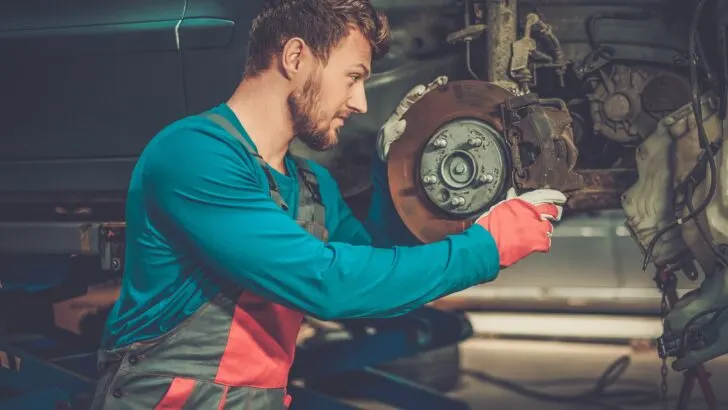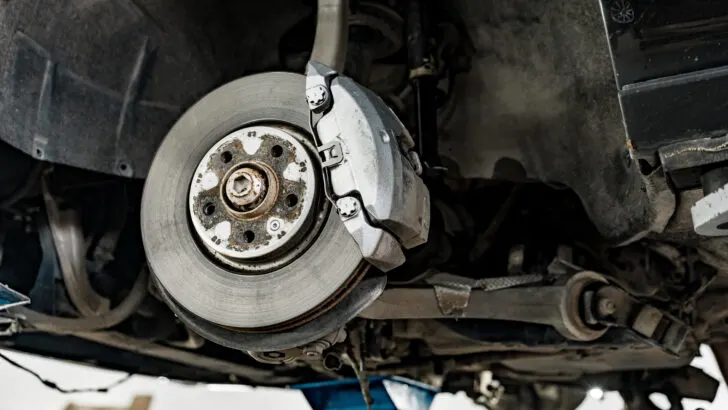Have you ever wondered how heavy-duty vehicles come to a smooth and safe stop? Enter the world of dual air brake systems!
A dual air brake system is a braking system commonly used in heavy-duty vehicles that consists of two separate air brake systems that work together to provide reliable and efficient braking performance. This redundancy ensures that if one system fails, the other system can still maintain braking power, enhancing safety and reliability on the road.
Many vehicles, such as school buses, heavy-duty vans, and large trucks, will use a dual air braking system. This is ultimately two independent air brakes referred to as the primary system and the secondary system, that are both operated by a single set of controls.
In this article, we explore the fascinating realm of dual air brake systems, shedding light on their crucial role in ensuring reliable braking performance for trucks and buses.
What is a Dual Air Brake System For?
Originally, the dual air brake system was created for a higher level of safety on larger vehicles and to provide the driver with more control in order to prevent an accident.
The idea was to provide a certain amount of redundancy when it came to the braking system in order to prevent a total brake failure in vehicles that commonly carry extremely heavy loads.
Most large vehicles manufactured in today’s market will be equipped with a dual air brake system in the factory.
In most developed countries, having a dual system on large vehicles that carry heavy loads or are oversized and weighty vehicles themselves is a requirement before they can be driven on public roadways.
If you are new to the vehicle, you may not be sure if it has a dual air brake system or not. This can be true if you are a contracted driver that gets a different vehicle on a daily basis for short trips or if you are using a replacement vehicle for a short time while yours is in the shop.
One of the easiest ways to check if your vehicle is equipped with a dual air braking system is to look at the vehicle’s dash-mounted panel, where the gauges and dials are located.
If your vehicle has a dual air system, you will either notice two separate pressure gauges or a single pressure gauge with two separate dials.
You can also check under the chassis of the vehicle around the rear tires for a compression system. In some cases, this will be near the axle itself, and in others, the actual compressor will be a good distance away.
In either case, you will notice multiple lengths of airline tubing running to and from the braking area, which is a good indication that the vehicle has a dual air system.

Inspecting a Dual Air System
If your vehicle is equipped with a dual air braking system, it may be important to regularly inspect the braking system yourself or have a qualified mechanic inspect it for you.
If you plan to do your own pre-drive inspections, one of the first things you should do is allow the air compressor a fair bit of time to build up a solid 100 psi air pressure in both systems.
You should be able to easily watch the psi climb from the cab of the vehicle, and the compressor should build up the pressure in a short amount of time as long as there is no damage or failures in the airlines.
While you can drive safely below 100 psi, you should never start driving a vehicle that has less than 60 psi or one that is displaying a low-pressure warning. In most cases, this means your braking system will not be working reliably and could fail entirely when you need it most.
In addition to keeping an eye on the pressure gauge, also take the time on a regular basis to do a full walk-around visual inspection of the vehicle.
This can alert you to certain areas that may cause trouble during your drive or which might need minor adjustments, such as along the slack adjuster and push rod lines or near the brakes themselves.
If your vehicle was manufactured after 1994, you won’t normally have to do any manual adjustments on the slacks since these are automatically adjusted when the brakes are applied in full.
It is always good, however, to do a visual inspection and make sure the components look normal and are not bent, warped, or otherwise damaged.
Which is Safer for Heavy Load Vehicles?
Having a primary and secondary air brake system in vehicles that commonly carry or pull heavy loads is vital for the safety of yourself and those on the road around you.
It’s no wonder a dual system is a road requirement backed by law in many countries!
Dual air braking systems are almost standard in vehicles over a certain size, but it’s also not uncommon to find them as after-market additions in smaller vehicles.
Especially if those smaller vehicles will be hauling RVs, horse trailers, or boats.
Not only does having this extra braking system on the pull vehicle add a higher level of safety when controlling or stopping that vehicle, but it also increases the chance of avoiding a potential accident when hauling a trailer behind.
A secondary braking system can also be added to the trailer being hauled, which can be a vital consideration for livestock or recreational vehicles.

The Dual Air System and your Drivers License
In many states, especially those with higher-end commercial driver’s license programs or CDL classes, knowing the ins and outs of a dual air braking system is vital for passing your written part of the driver’s exam.
If you are unfamiliar with the benefits of a dual air system and how you should do pre-drive visual inspections, or if you are unsure of how to read the gauges on the dash letting you know when you should, it might be a good idea to study the system before taking the test.
Most written exam portions of the CDL will show visual representations of the air brake system and ask you to identify certain parts or answer questions on how the different components work together in order to provide a safer driving and stopping experience.
If you found this article helpful, make sure to take a look at some of my other brake-related articles below!
